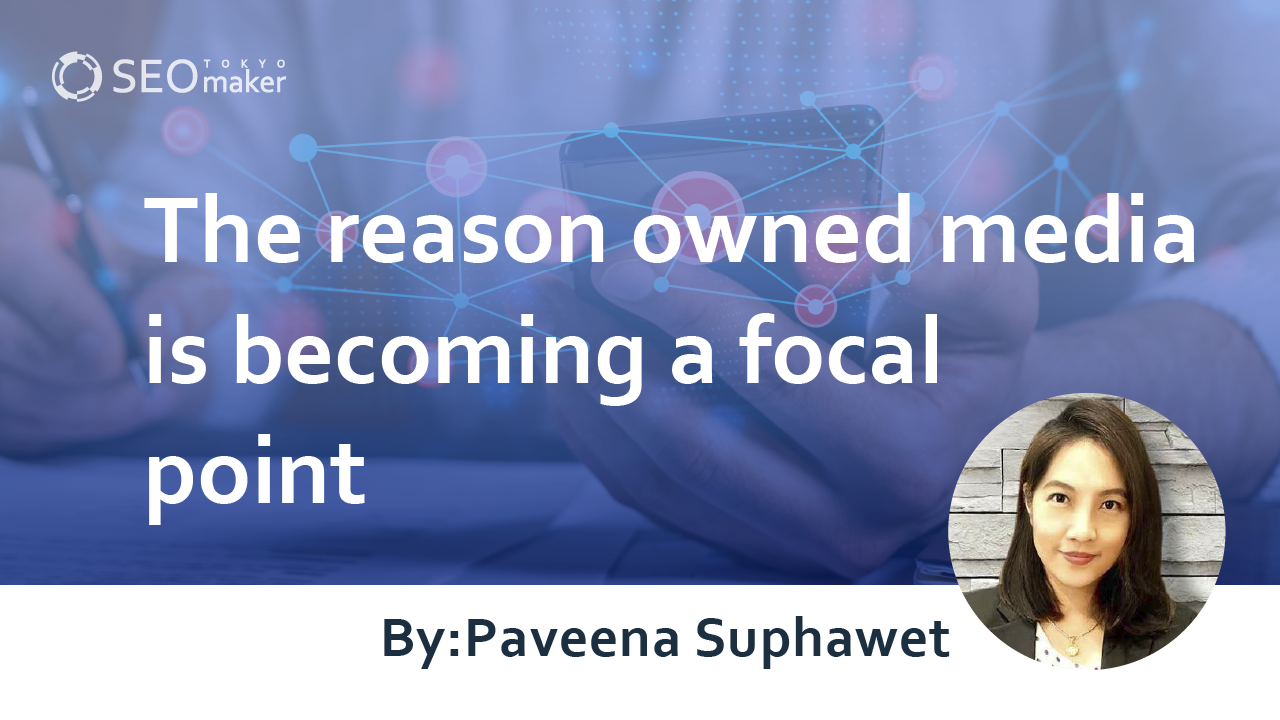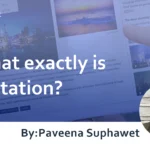The reason owned media is becoming a focal point: Explaining Effective Management Methods
contents
 Among the various internet media users encounter, including the so-called “triple media” of paid media, earned media, and owned media, is noteworthy.
Among the various internet media users encounter, including the so-called “triple media” of paid media, earned media, and owned media, is noteworthy.
Of these three media types, owned media refers to any media outlets that a company owns outright. Owned media offers the potential to provide valuable information to prospective customers, encouraging interest and engagement with products or services.
Moreover, content can be accumulated as an asset, showcasing the appeal of products or services to premium customers. Owned media allows for the application of SEO strategies to reach a broad audience, from potential to premium customers.
Owned media has recently gained attention as a medium for disseminating information. This focus is due to the effectiveness of implementing SEO and managing the media efficiently.
Why Owned Media is Drawing Attention
The surge in interest towards owned media can be attributed to several factors, including the rising costs of web advertising, which often fails to yield expected results. Additionally, the constant evolution of search algorithms now prioritizes content that is beneficial to users.
The rise of social media has also played a role, making it easier for individuals to share and disseminate valuable blog content. There are four main reasons for the increased focus on owned media
- Rising advertising costs and diminishing ad effectiveness.
- Continuous changes in search algorithms.
- Adaptability to SNS and curation media.
- Increased mobile content consumption.
Rising Advertising Costs and Lower Ad Effectiveness
One reason for the attention on owned media is the skyrocketing cost of advertising and its declining effectiveness. The competitive bidding for ad space has driven up the cost of acquiring conversions.
Many users find ads intrusive, further diminishing their effectiveness. The availability of ad-blocking features on smartphones underscores the growing relevance of owned media as a communication tool.
Constant Changes in Search Algorithms
Search engines like Google continually update their algorithms, increasingly focusing on the content’s relevance and utility to the user. It is crucial that the content contains valuable information sought by users.
Owned media allows for the creation of quality content that aligns with users’ search intentions, aiming for higher search result rankings.
Adaptability to SNS and Curation Media
The third reason for the interest in owned media is its potential for dissemination through SNS and curation media. High-quality owned media contains a large amount of information, increasing the opportunities for it to be seen by users.
Users who view information on owned media are likely to empathize with and share useful information on social media. Based on the information on social media, there is an increased likelihood of being linked to from external sites.
Owned media is gaining attention because of the potential to spread information through curation media and social media.
Increased Mobile Content Consumption
The fourth reason is the rise in mobile content consumption. More people are using smartphones to search the internet, read blog posts, and utilize apps and tools.
Blogs and articles are designed to be viewed on smartphones, making them easy to read, which explains why more users are searching for and reading them.
Starting Your Owned Media
As owned media gains prominence and more companies venture into media management, preparation is key.
- Define your target audience.
- Decide on your site’s concept.
- Design the customer journey and funnel.
- Create the site and content.
Defining Your Target Audience
The first step in launching owned media is identifying the target readership. Set a persona representing the ideal reader. Creating content that addresses the needs and problems of these users is crucial. Defining this persona helps produce content that precisely targets the concerns of these users.
By establishing personas and having a shared user image, it becomes possible to create content that precisely addresses the concerns of users. Deciding on a target is a key point for starting owned media. Please understand the users’ search intentions and set personas accordingly.
Deciding on the Site Concept
Determine what information you will provide to the personas you have set. If your target audience is looking for how-to knowledge, practical applications, or step-by-step instructions, then your content needs to convey expertise and guidance.
It’s also crucial to create a mechanism that transitions from your content to your own products or services. Produce content that delivers the information users are seeking and serves as a means to resolve their needs, ultimately leading them towards purchasing your services. Establishing the concept of your site when launching is essential.
Designing the Customer Journey and Funnel
The customer journey refers to a marketing framework that visualizes the segmentation of potential customers. By categorizing prospects, you can tailor your approach to encourage consideration of your services at each stage.
The funnel can be divided into visible layers, consideration layers, and potential layers. The customer journey map, a widely used marketing framework, encompasses not just actions but also thoughts and emotions in the process of converting prospects into customers.
Creating and utilizing a customer journey map can enhance customer experience. Before creating a site, optimizing your approach to products and services for potential customers and deciding on the site’s concept are crucial.
Selecting Content Keywords
After establishing your persona and creating a customer journey map, the next step is to select keywords for your pages. Based on the customer journey map, understand the psychological state of your users and capture their needs. Deciding on the necessary keywords for content creation based on user needs is crucial.
Starting Content Creation and Management
Once you have selected your keywords, create content that will attract traffic through those keywords. It’s important to reference sites that rank highly for your chosen keywords while also incorporating unique and specialized content to ensure high rankings.
Three Key SEO Strategies for Owned Media
With the preliminary preparations for starting owned media complete and operations underway, SEO should be applied to ensure your content ranks highly.
The three key focus areas for SEO on owned media are
- Keyword selection
- Content creation
- Site design and structure
Keyword Selection
Keyword selection involves deciding on the keywords you aim to rank for with your owned media. Understanding what searches users perform and their search intentions is essential in owned media strategy and SEO.
Key points to consider when researching keywords include;
- Understanding users’ search intentions and needs
- Knowing your competitors’ sites and pages
- Identifying keywords that have led to successful rankings for competitors
- Understanding the themes, content, and word count of top-ranking content
Research should consider both user needs and competitor sites.
Content Creation
Based on the needs of users and competitor research, create article content using the selected keywords. The content that meets user demands can be summarized as follows;
- The page is rich in information beneficial to users
- High in value and useful
- Has expertise and reliability
- High-quality page
- Appealing page
Creating high-quality content that is viewed by users naturally tends to be shared on social media and attract external links.
Focus Points in Content Creation
To produce comprehensive content, focus on the following points:
-Does the content cover the users’ search intentions?
-Have you conducted co-occurrence word research to ensure that these words are included in the article, thereby enhancing its comprehensiveness?
-Are themes handled by competitors incorporated?
-Does it touch on unique content not found in competitors?
-Does it include currently trending topics?
Creating content that includes such elements can lead to positive evaluations from both users and search engines.
Site Design and Structure
Let’s summarize the site design and structure efforts essential for SEO in owned media. For new owned media to appear in search results, search engine crawlers must correctly index pages during their crawls.
A site design and structure mindful of crawlers are necessary. It’s also important to check internal SEO strategies.
- Keep the site structure simple
- Optimize SEO tags
- Implement breadcrumb navigation
- Use global navigation
- Ensure constant SSL
- Submit an XML sitemap
- Make the site mobile-friendly
- Improve loading speed
Simple Site Structure
As the number of article contents increases in owned media, the page count can become extensive. However, the site structure should remain simple.
Ideally, all content should be reachable within three clicks from the homepage. A deeper hierarchy can delay crawlers from finding pages.
Optimize SEO Tags
SEO utilizes three types of tags: title, meta, and h tags, which are essential for crawlers to understand article content. Proper use of these tags is necessary for accurate information retrieval.
When users visit your site, ensure they can find the information they want by always placing global navigation at the top of the homepage. The purpose of global navigation includes;
- Helping find the sought information
- Indicating the current location on the site
- Showing what information is available on the site
- Demonstrating how to use the site
Breadcrumb navigation displays the user’s current page hierarchy within the website using “>” marks. It improves navigation and dwell time, making it easier for crawlers to traverse and understand the site structure.
Constant SSL
Ensuring users can safely use the internet involves encrypting communication through https, known as Always-On SSL. This encryption protects against the theft of personal information and malicious attacks.
While not directly a ranking factor for SEO, having SSL encryption to securely transmit information is essential.
Submitting an XML Sitemap
An XML sitemap is recommended for newly published sites, those converted to https, or sites with complex link structures. If you’re creating owned media with WordPress, you can address this need with the Google XML Sitemaps plugin.
Mobile Compatibility
It is imperative that the owned media you create is mobile-compatible. Since November 2016, Google has implemented the mobile-first index, meaning search rankings are determined based on the evaluation of mobile pages.
The optimal approach for ensuring mobile compatibility is to use responsive web design. With responsive web design, pages are displayed in an ideal layout regardless of whether they are accessed on a PC or a mobile device.
Improving Loading Speed
The speed of webpage display and loading is crucial for newly created owned media. Google includes display speed as one of the metrics for determining search rankings.
Users tend to abandon sites that take too long to load, often within 3 seconds, thus regularly monitoring and enhancing display speed is essential.
Key Points for Operating Owned Media
Here are some important points to keep in mind for managing owned media
- Do not expect results in a short period.
- Publish information that users need.
- Do not deviate from the core content.
- Execute promotions appropriately.
Do Not Expect Immediate Results
It is a mistake to conclude that owned media is ineffective if there is no immediate increase in access or inquiries after starting its operation. Owned media is about providing valuable information to users and gradually nurturing potential customers into repeat visitors over time.
Publish Information That Users Need
In operating owned media, it is crucial to always publish content that meets the users’ needs in a way that they can easily find it.
Content that focuses too much on the operator’s perspective may fail to connect users with the information they are seeking, resulting in lower viewership.
Keep the Core Content Consistent
In the process of creating a large volume of content on owned media, there may be a temptation to add or change themes to attract users.
When operating owned media, it’s important to be selective in what information to post, ensuring that content does not stray from the initial personas or touchpoints set out in the customer journey map.
Summary
To succeed in operating owned media, it is necessary to continue providing high-quality content that meets users’ needs. However, updating content alone is not enough; the media must also be evaluated correctly by search engines. We introduced three key SEO strategies to ensure search engines accurately crawl and assess your site. By implementing SEO and developing an SEO-strong site, you can nurture potential leads into users who purchase your products or services, leading to increased sales and revenue.









![What is a Description? Explaining the Meaning, Writing Style, and Changing Word Count – [2023 Edition]](https://www.switchitmaker2.com/en/wp-content/uploads/2024/09/what-is-description.webp)










